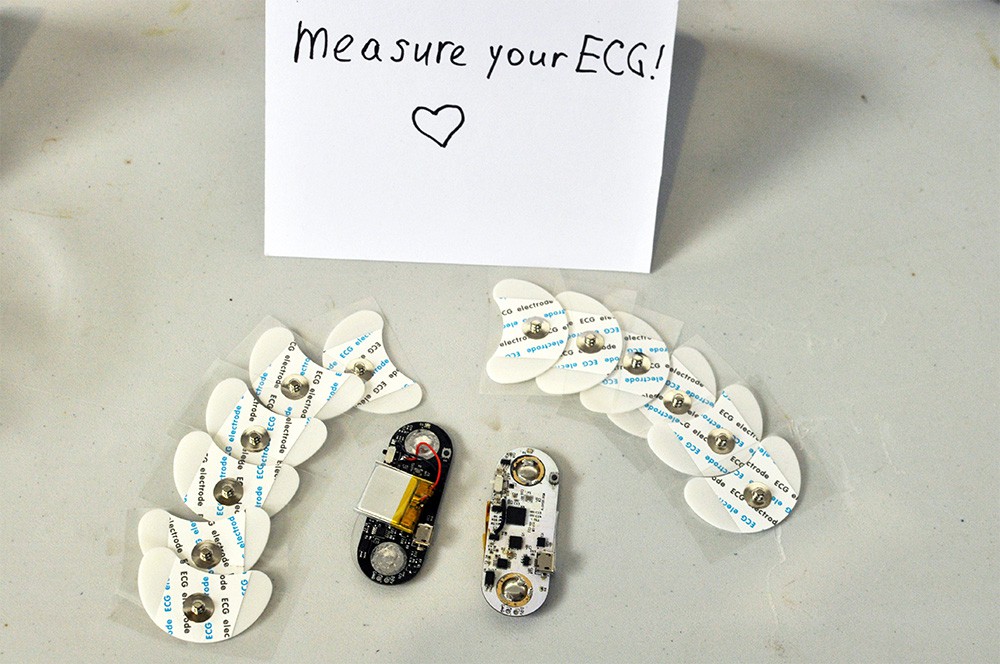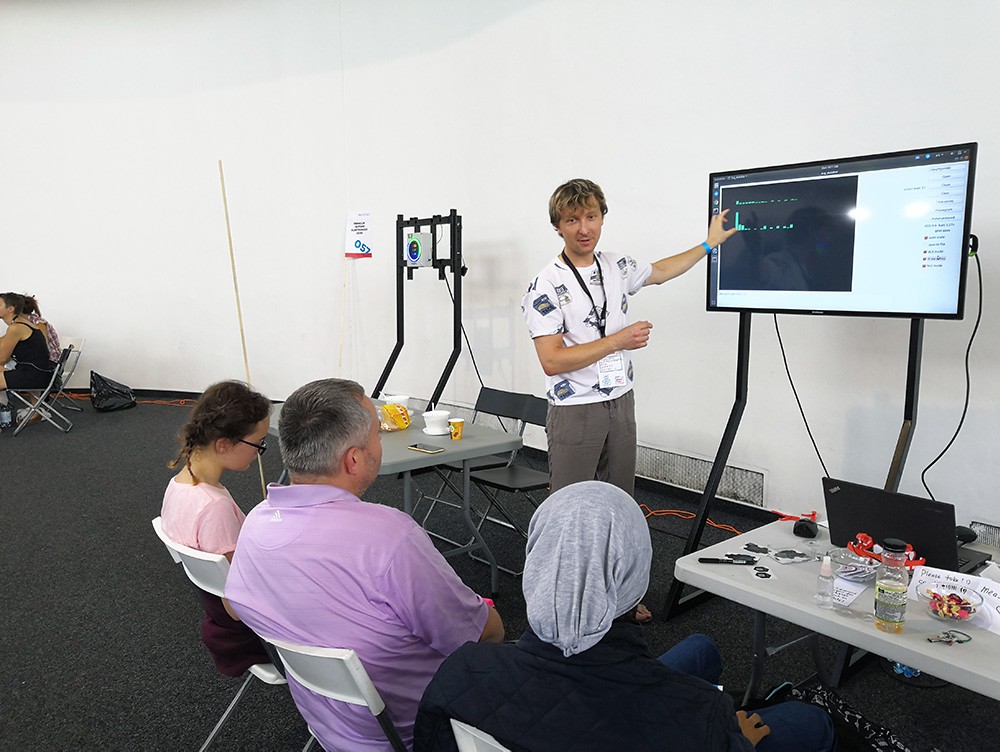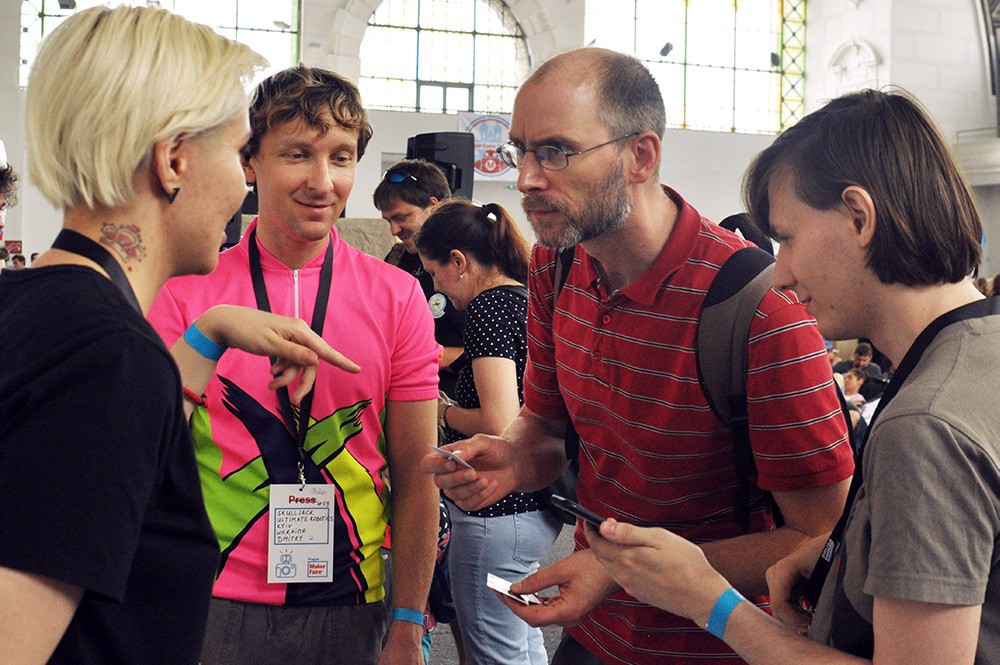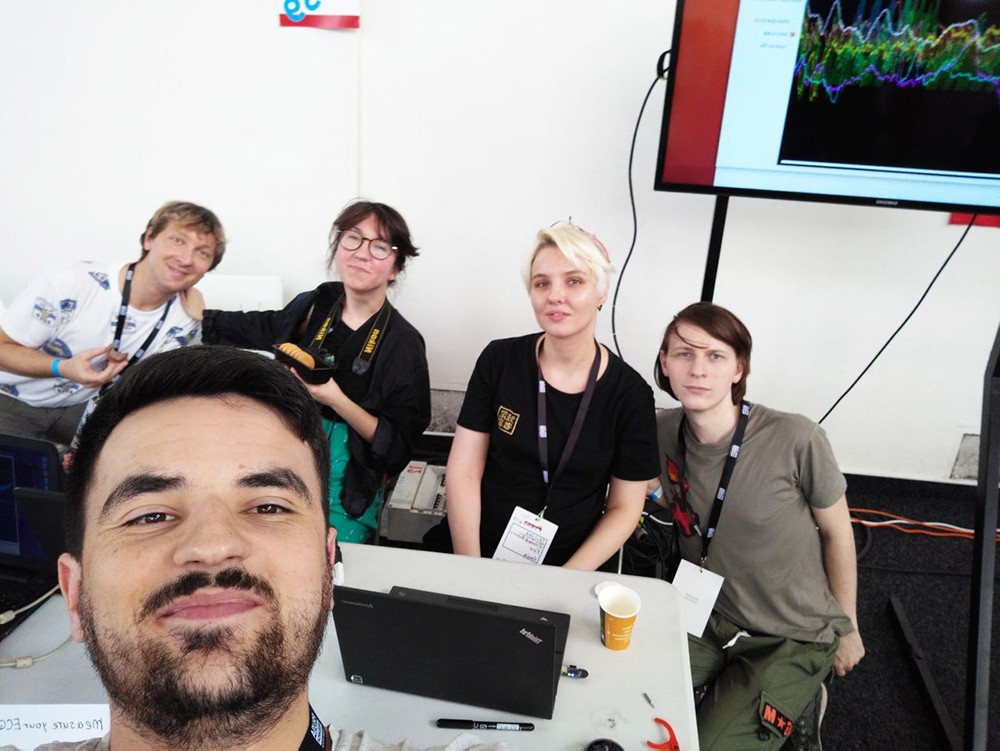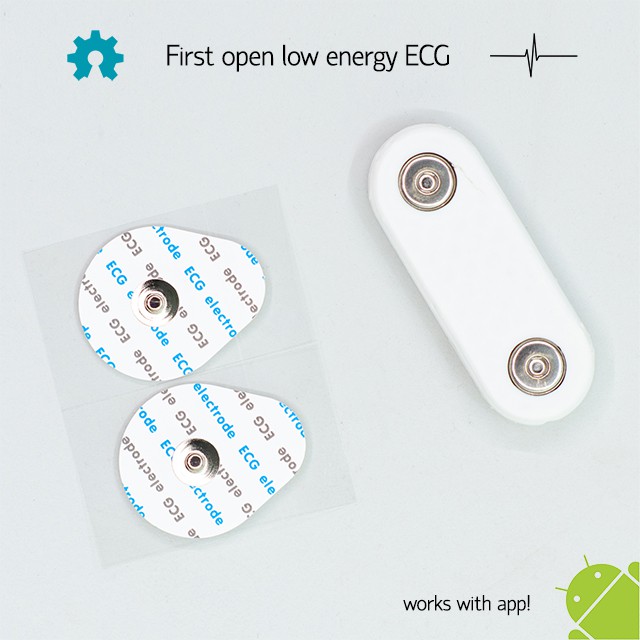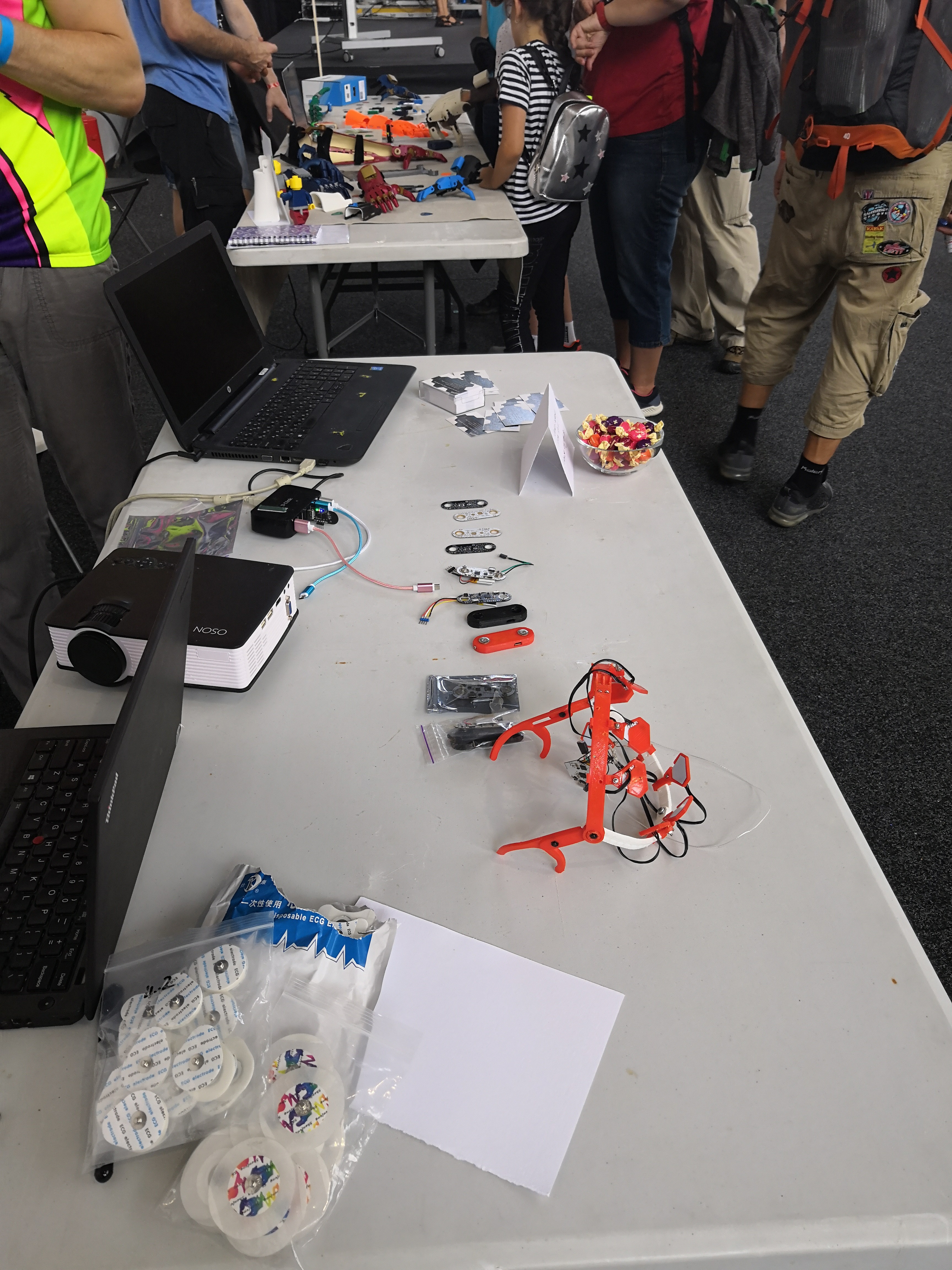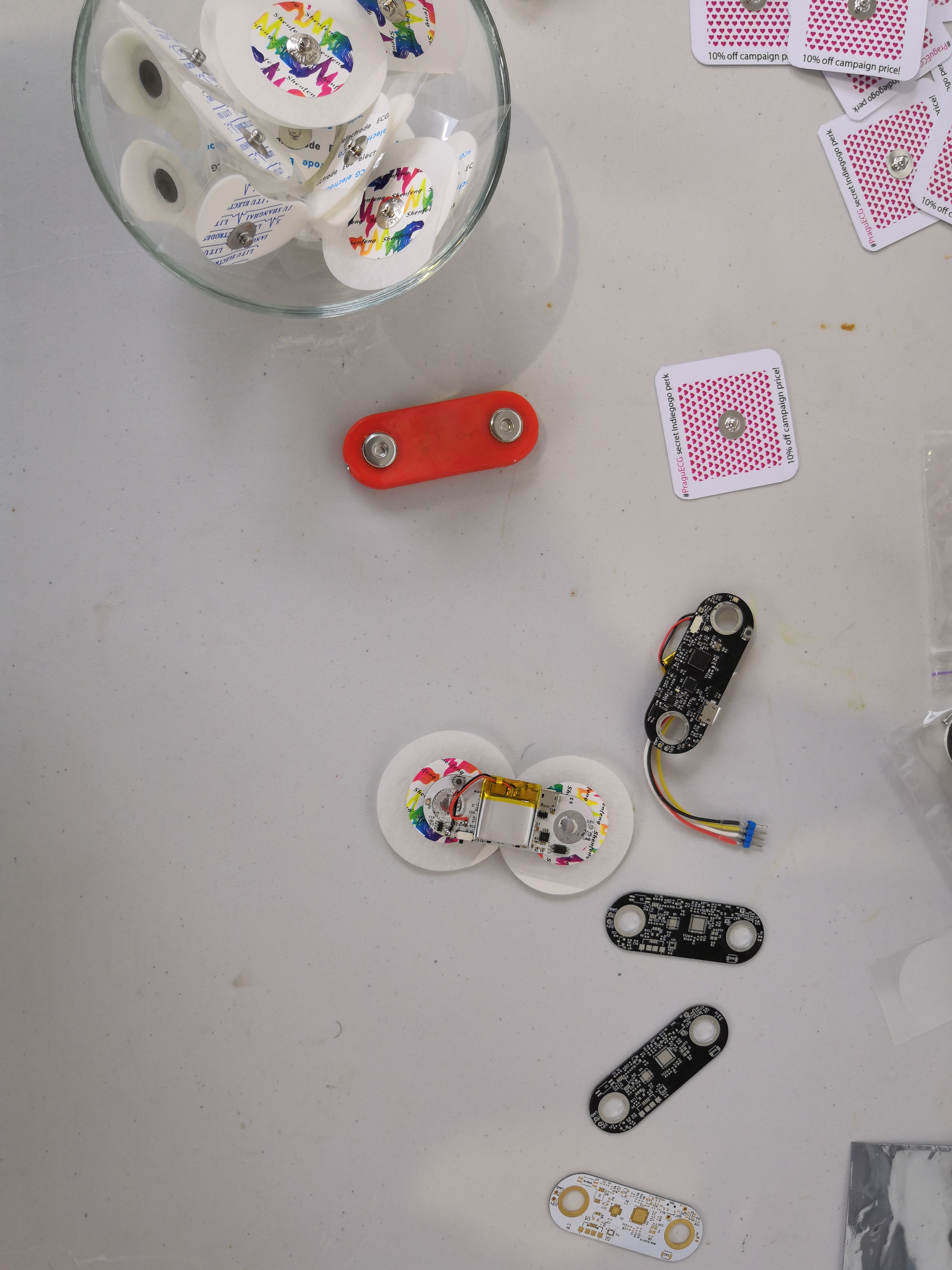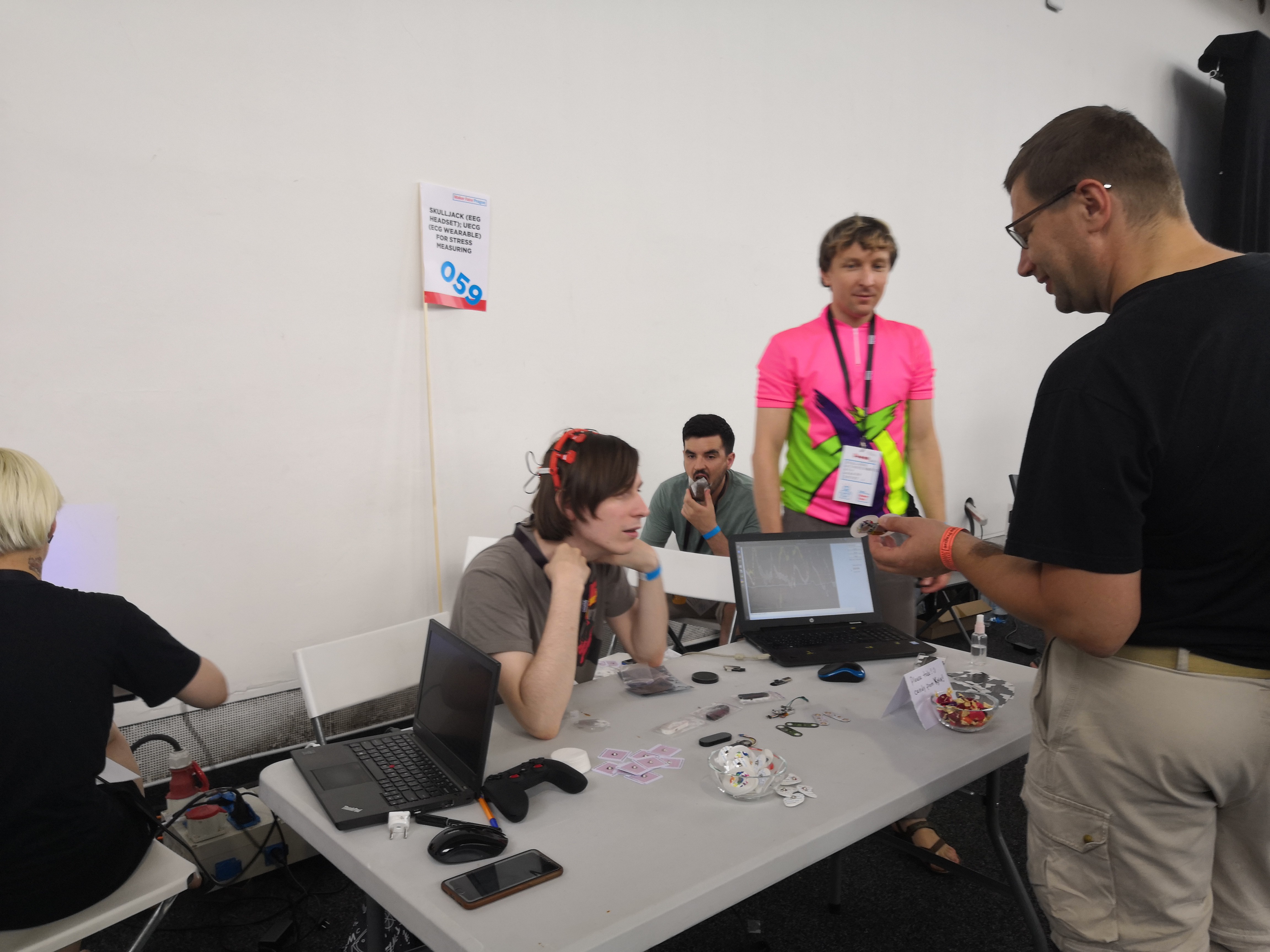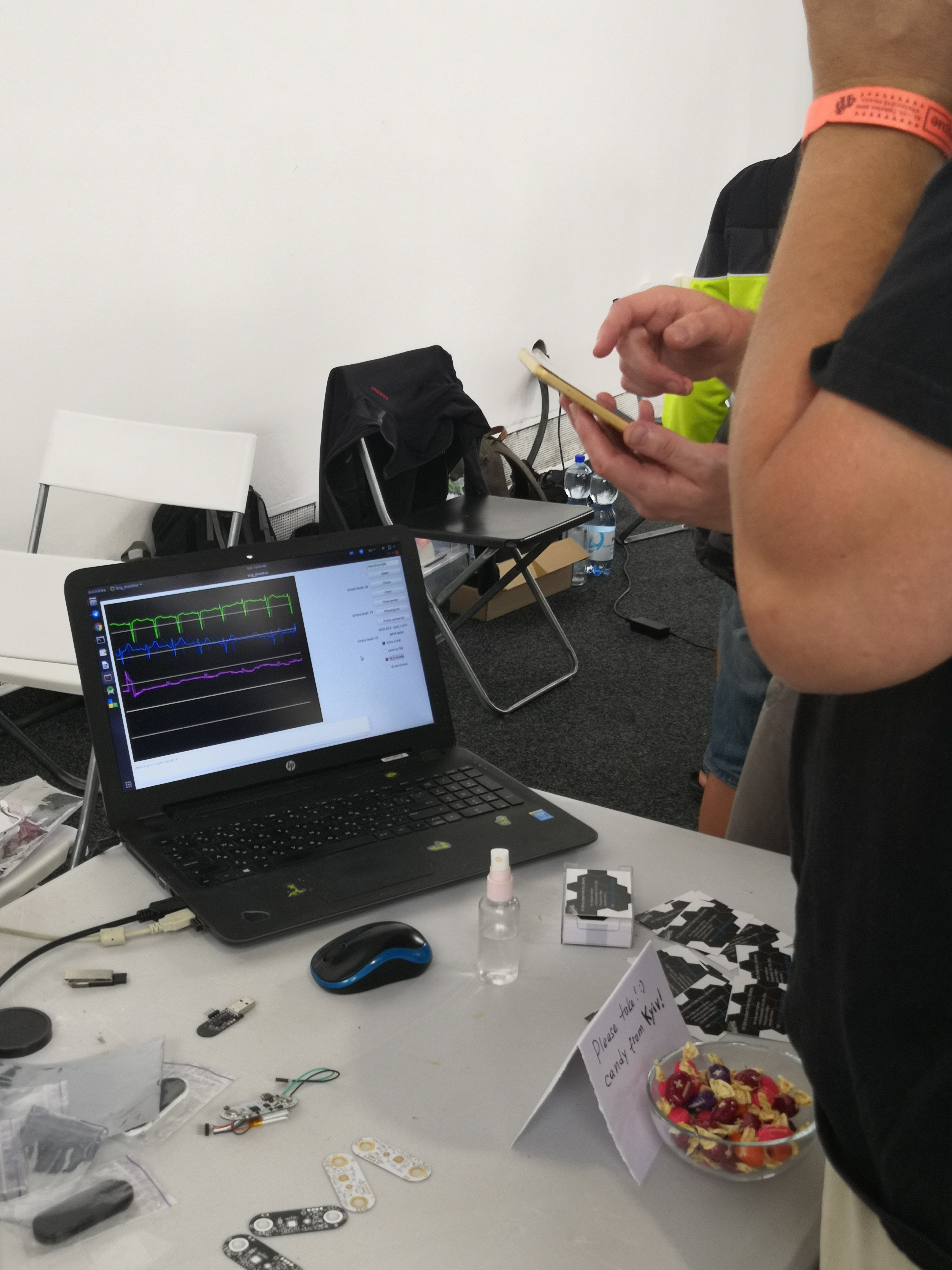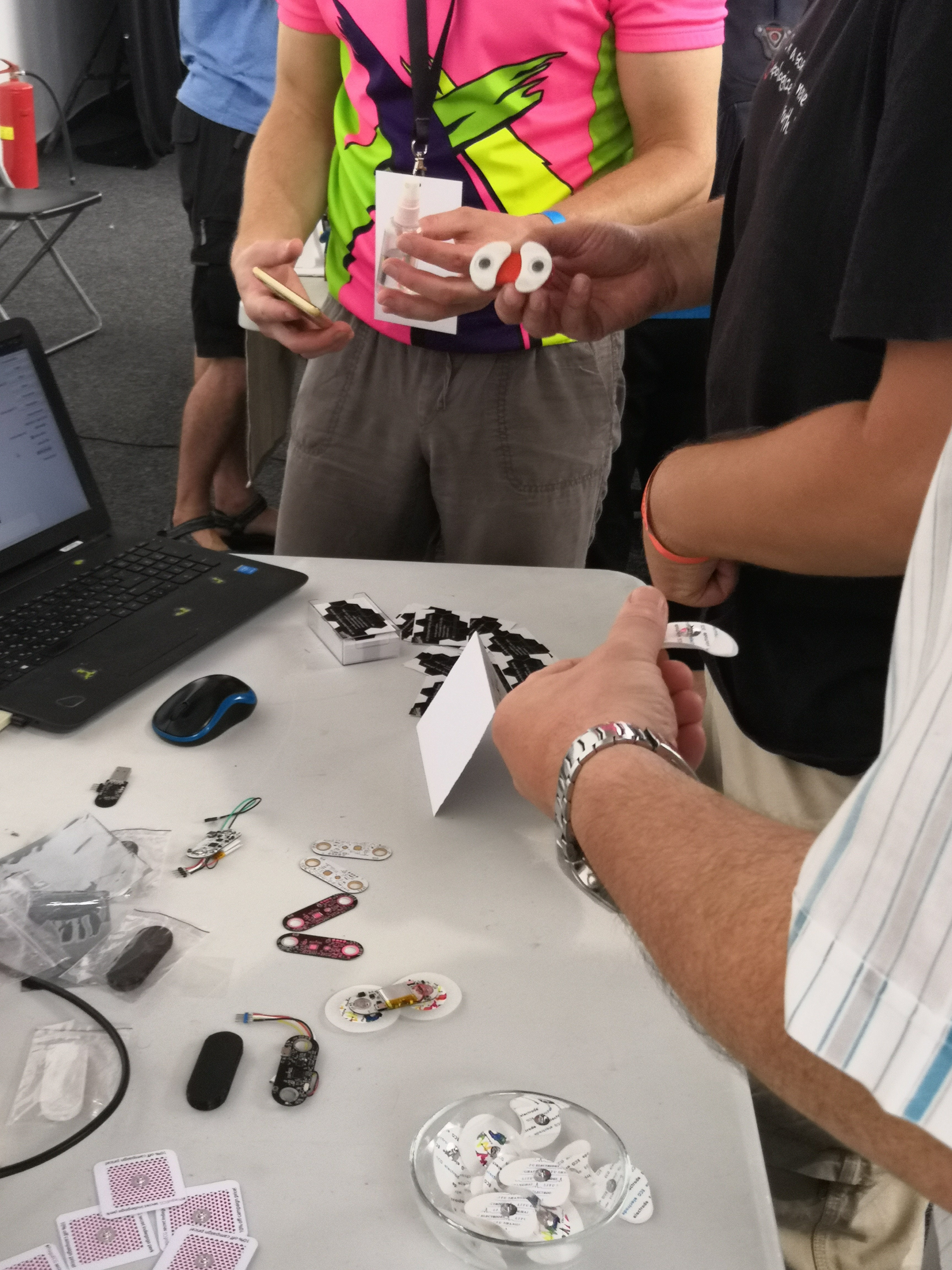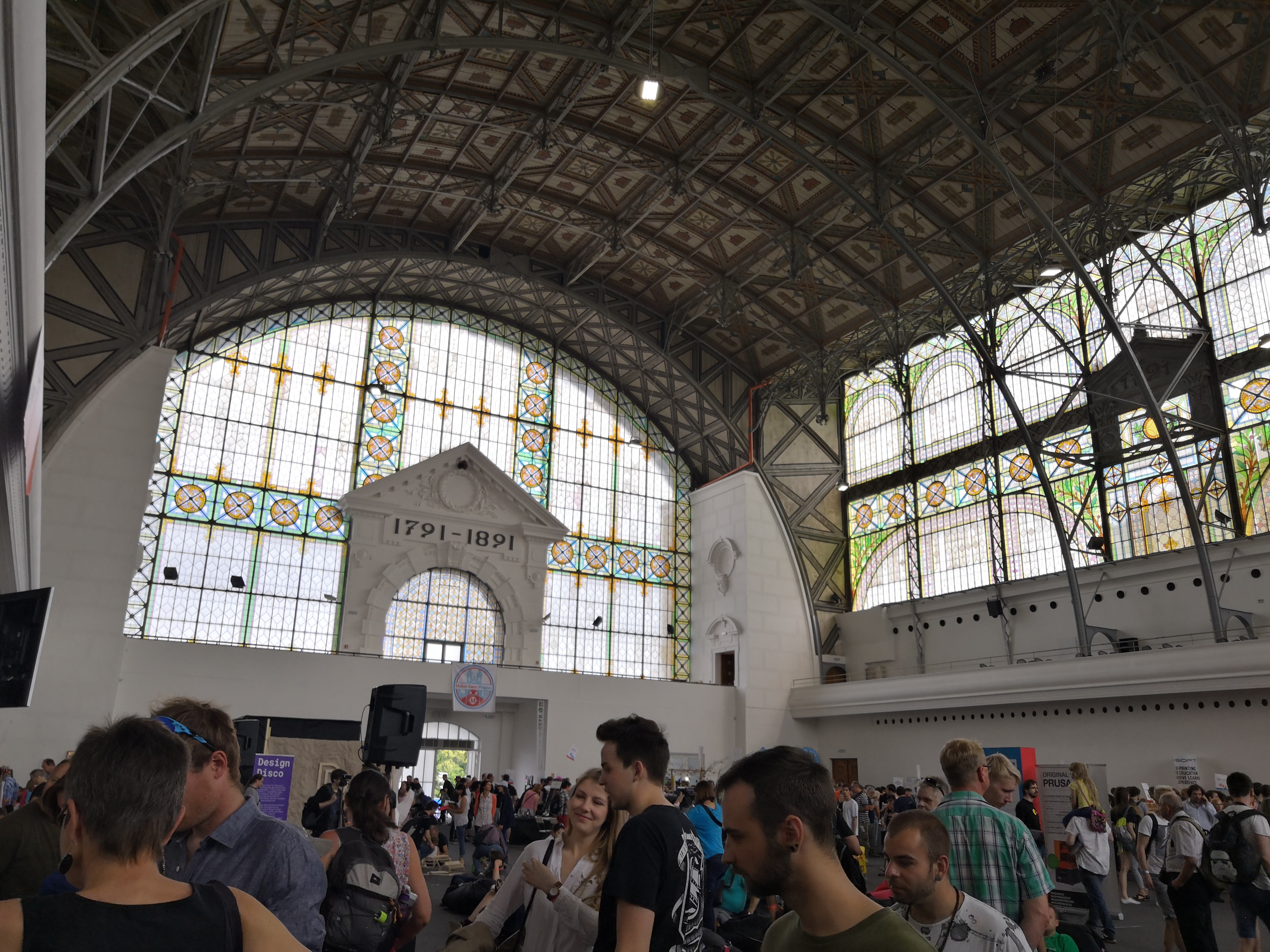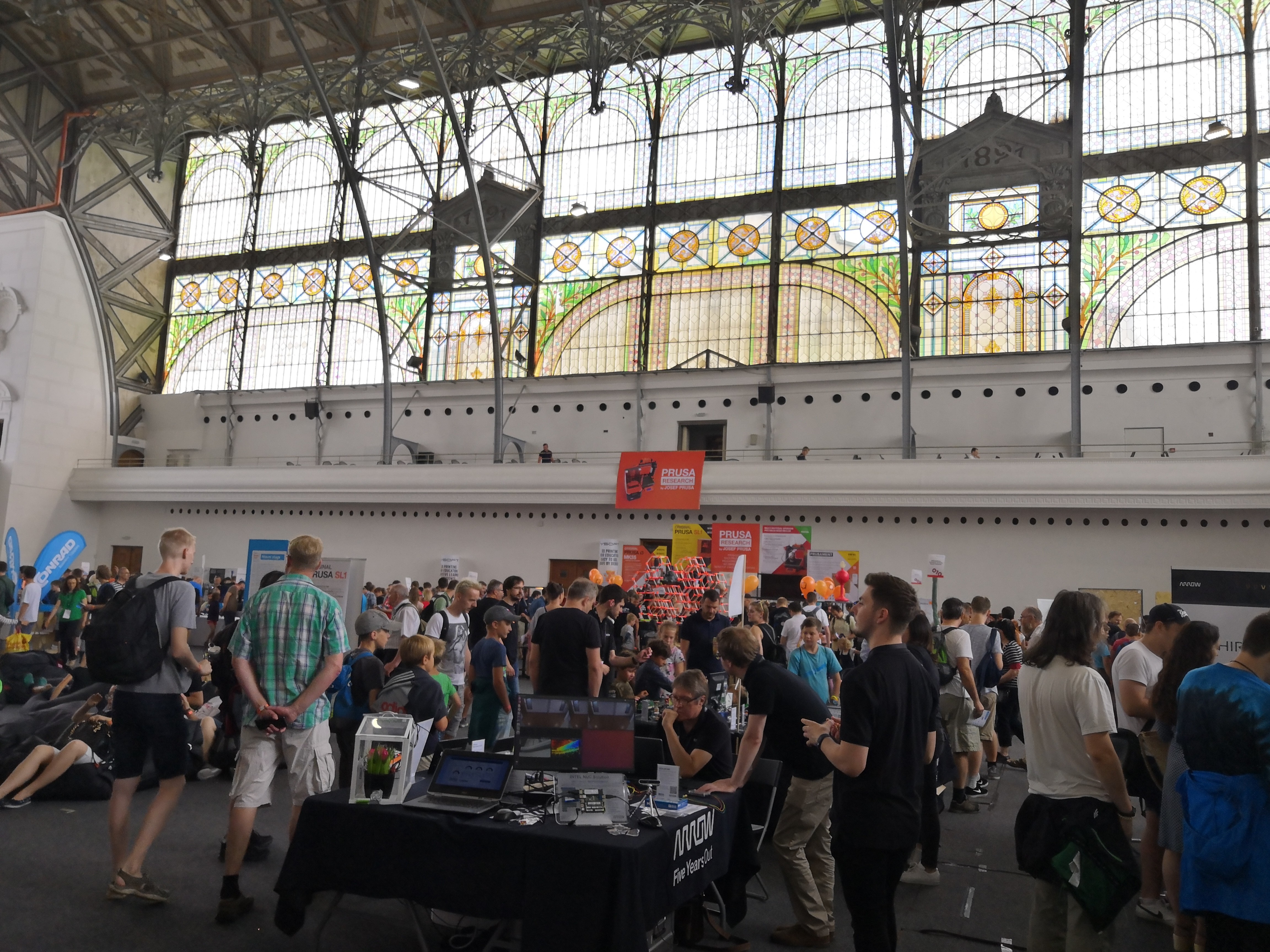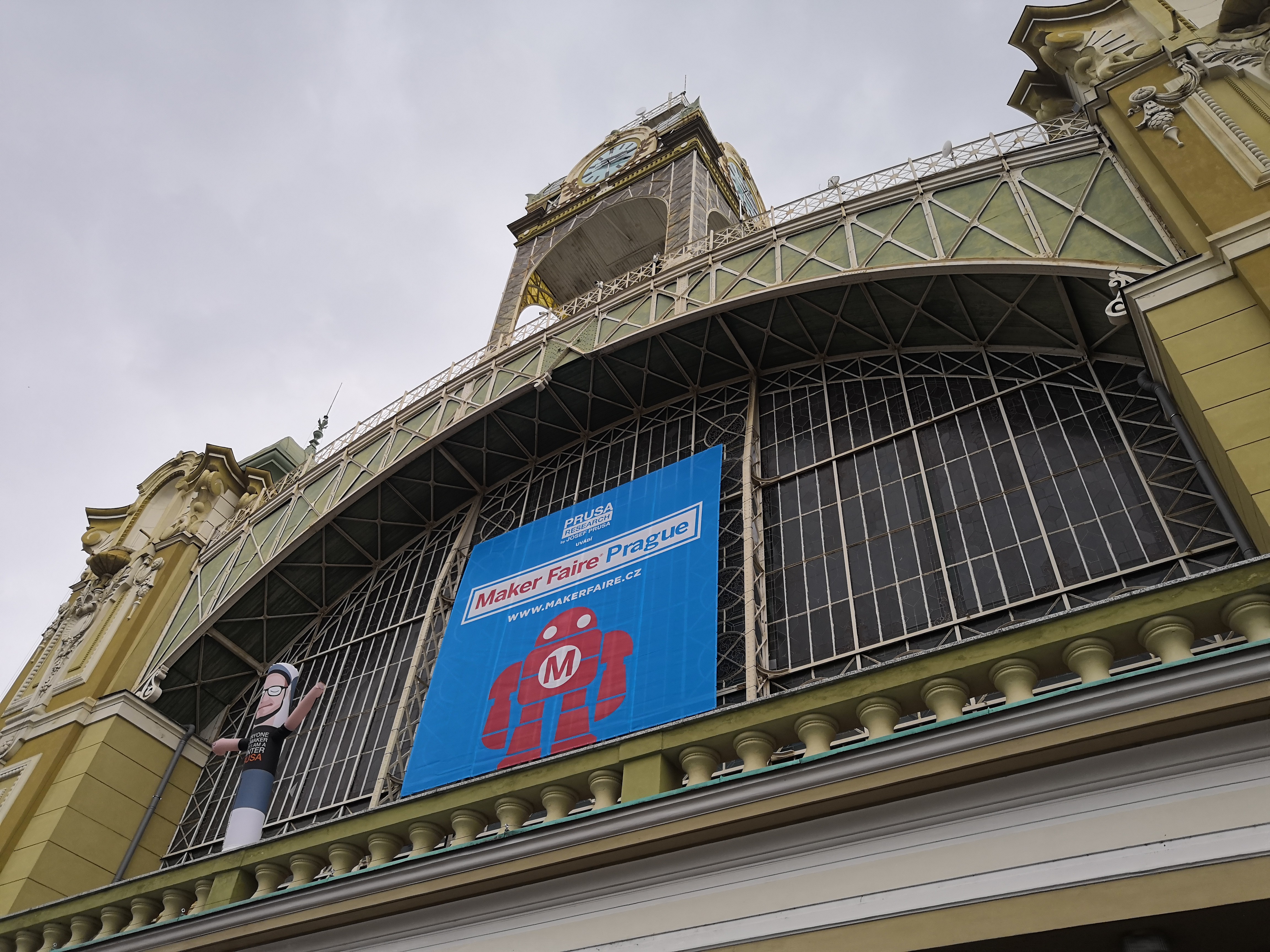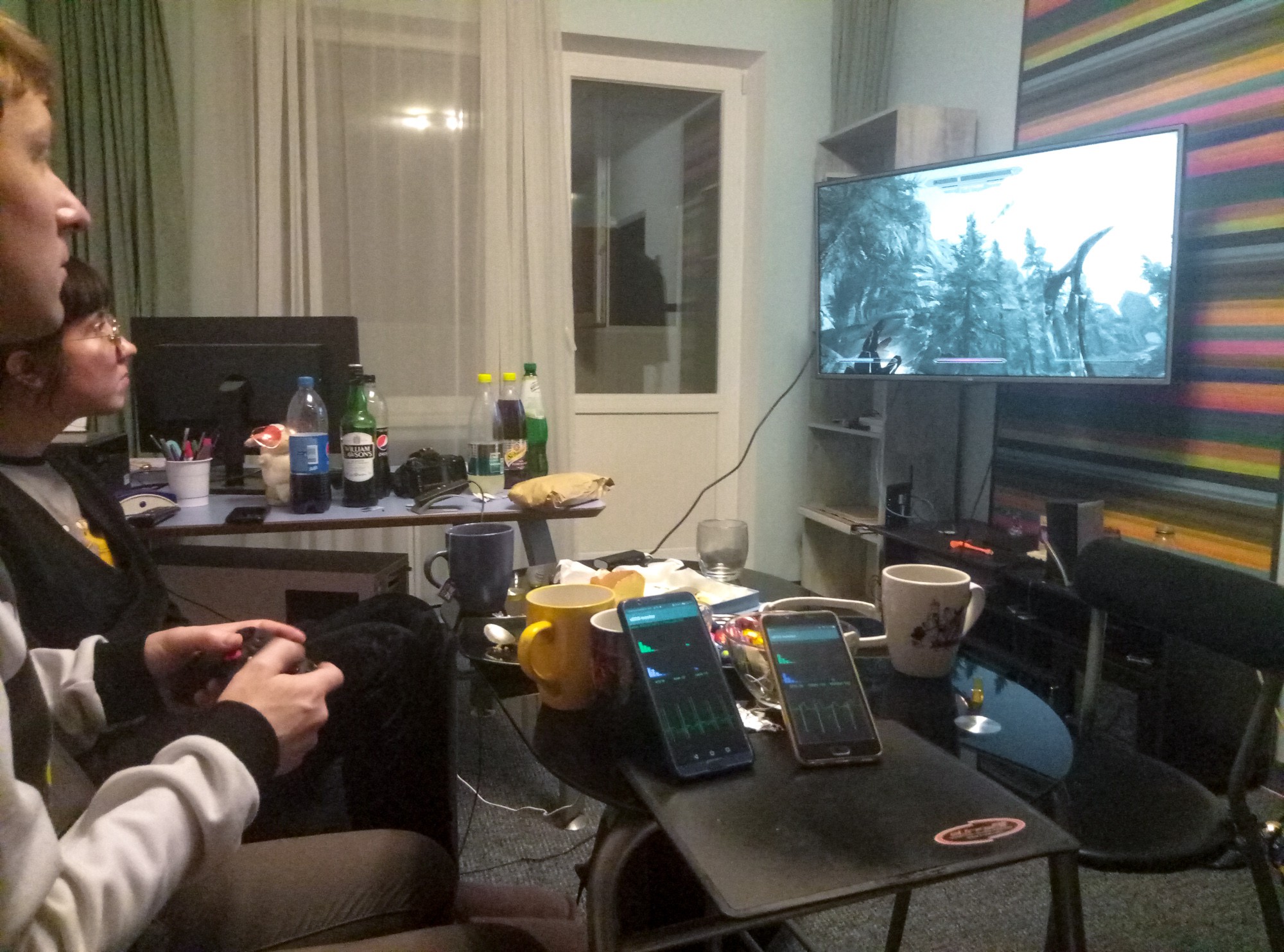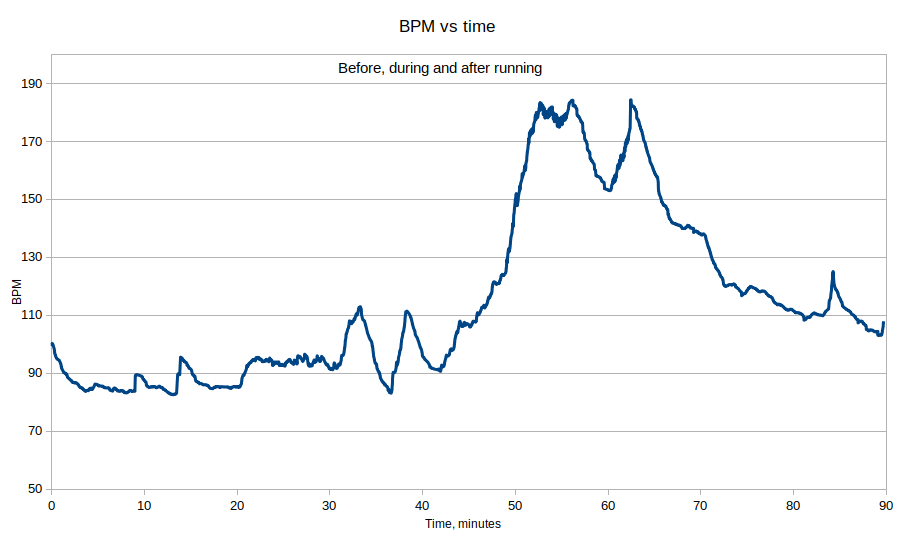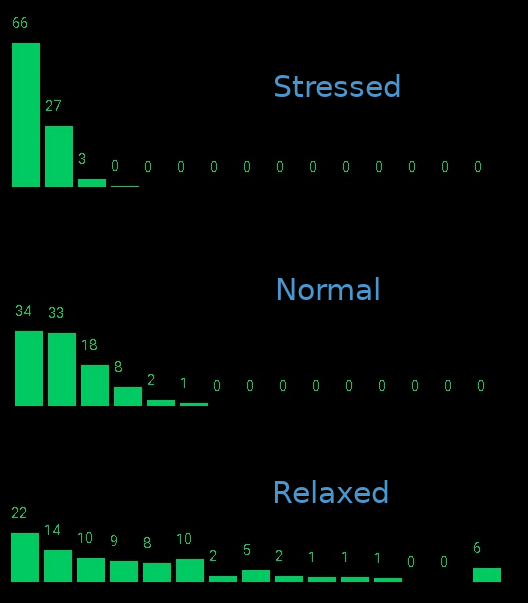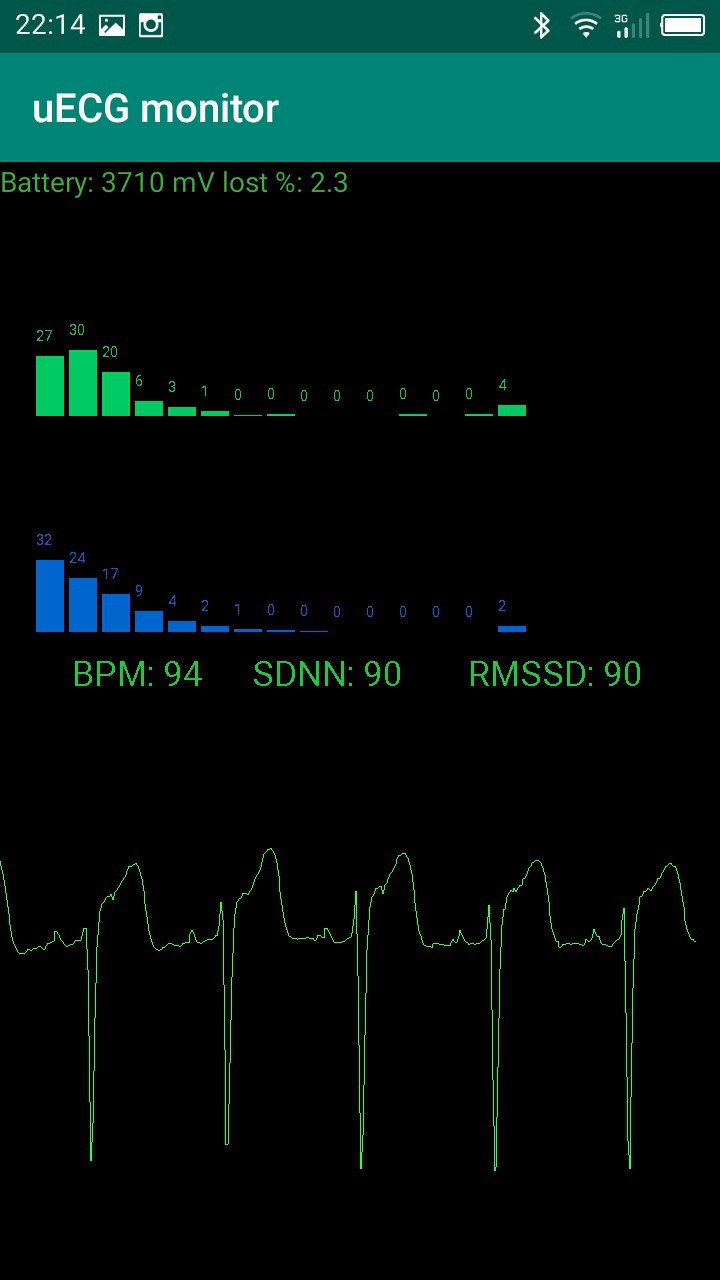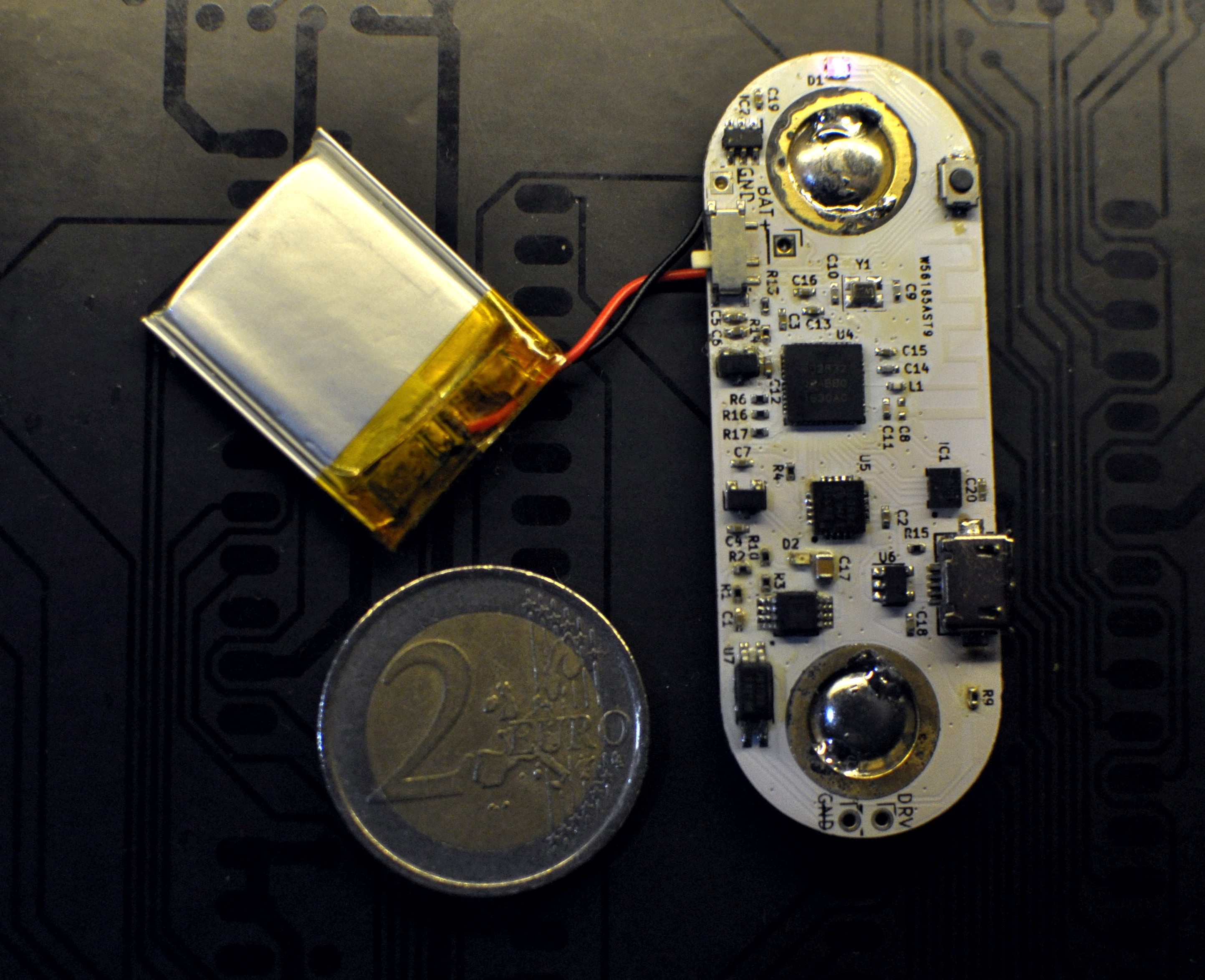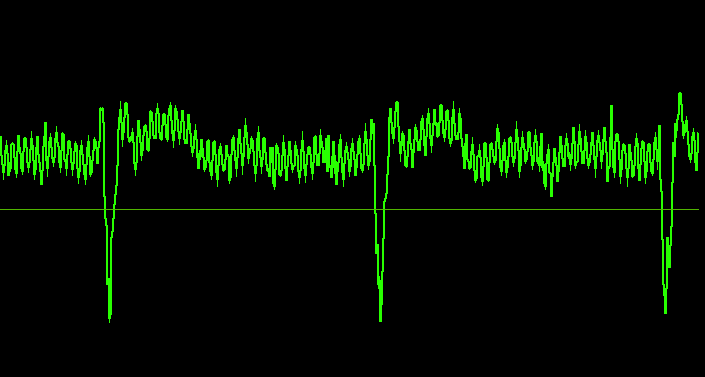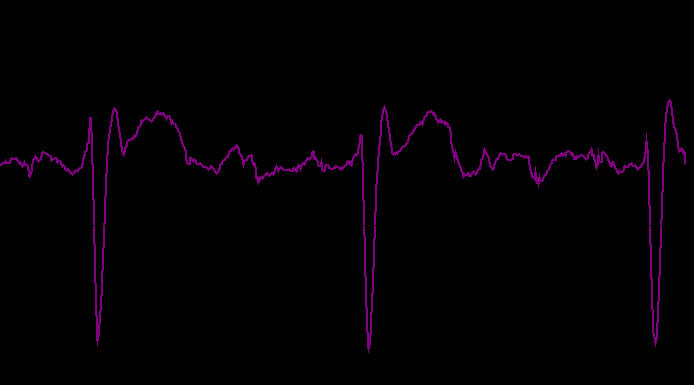-
We're crowdfunding!
07/03/2019 at 22:11 • 0 commentsFinally we got to post on Hackaday! We're back from Makerfaire - it's been a very busy time. Lots of people (20+) tested our device in the field, so to say, and ironically, it could be considered a stress testing for our device, though we couldn't measure its stress level :) Surprisingly, it worked well on most of the people - the only complications were body hair and when some of the clothes made it difficult to stick (for example, on women).
![]()
![]()
We were very excited that people could see our device and that it was interesting to them. Mostly they were just excited to try it, and some of the other people fell into two categories: they either didn't understand what's it for, or straight up wanted to work with it. We even had a doctor tell us that he definitely wants to use it to just give patients to wear at home, as a support to hospital diagnostics!
![]()
And one other person we gave our device and the USB desktop base for it so he could use it for development immediately, which was immensely inspiring. The excitement could probably be better seen on our faces in the photo, if we weren't so tired :P The exhibition is a very noisy, busy place, and we spent a lot of time getting there and preparing and running around, but it was totally worth it!
![]()
(by the way, the big screen shows some EEG, which is our other project, Skulljack)
We have been planning crowdfunding uECG for some time before the Makerfaire, so we prepared discount coupons with a QR code link to secret perk, but weren't sure if anyone will be interested. But people took around 30-40 of them, so when we returned we decided to do it :)
The campaign is now live on Indiegogo. It's nothing fancy, just uECG - base price of which is $79 - and a couple options, like adding a 3D printed case, our USB base station and a Chinese STLink clone so you don't have to wait for it from Aliexpress!
![uECG campaign card uECG campaign card]()
uECG - a very small wearable ECG on Indiegogo! -
We're at MakerFaire Prague!
06/22/2019 at 13:43 • 0 commentsHi everyone! We're at MakerFaire Prague, with both uECG and Skulljack! It's been a really hectic month, and it looks like a really hectic weekend here, as well!
![]()
![]()
![]()
![]()
![]()
![]()
![]()
![]()
-
Of dragons, stress levels and ECGs
04/15/2019 at 20:04 • 0 commentsWe're pretty sure nobody tried measuring stress using Skyrim and an ECG device, so we decided to try it ourselves and give uECG another test drive, now with more participants. Unfortunately, since we didn't have any saves with a cave bear or a sabercat (or a spriggan) going off in your face, we had to use a dragon instead.
![]()
Technically, those were two dragons.
Fascinating trivia aside, we had a go at the dragon du jour in pairs, one person playing and one person watching, to see how heart rates and stress levels change depending on how involved you are with the game. The results we've got, after cleaning them up, were wide and varied - about half of the players had elevated stress while fighting dragons, but lower stress while watching; the other half had elevated stress while watching the other fight, but got calmer and focused once it was their turn. For someone, it didn't change much at all!
![]()
We've got excellent graphs and Poincare plots coming up in the next log, but so far, we've enjoyed this, and are just itching to test ourselves - and our hearts and minds - further, hopefully with something more stressful than a mere dragon. So far, the results were promising.
Just gonna need more data.
-
Poincare plots are now available! :)
04/10/2019 at 18:57 • 0 commentsAfter updating Android app so it stores all consequent beat times, detected on the device, we can build Poincare plots - for two consecutive beats, time of 1st beat is used as X coordinate, time of second beat - as Y coordinate, thus producing one point. A healthy heart has some variations in RR intervals, but they are relatively small, so Poincare plot looks somewhat like ellipse with long axis lying on X=Y line.
I've tested it before, during, and after running (it was a short ~15 minutes run). This is what I've got:![]()
It showed a problem that wasn't obvious before: beat detector sometimes skips beats - and thus we see almost perfectly aligned series X=2Y and 2X=Y (and some traces of X=3Y and 3X=Y). In case of real heart problems, there could appear "clouds" in these areas, but they are far from such a perfect straight lines, so this is definitely a problem of detection algorithm. Will work on that!
Besides this problem, it seems to work really well. Here is a chart of BPM vs time (I've started run after ~50 minutes after I started recording, and during the run, made a pause and then short sprint - all clearly seen on the chart)
![]()
-
Uploaded schematics and PCB
04/06/2019 at 11:56 • 0 commentsThanks for the followers and likes! :)
After some more testing of version 2, everything looks good, so we uploaded our schematics and PCB design files (in KiCAD 5). It still is not the final version, but it works as intended and we found no hardware problems (yet) - so if there are some bugs, they are not critical.
And here is a 3D render of the PCB:![]()
Firmware is still far from being ready, but we'll share it too when it would work smooth enough. -
Now we can measure stress!
04/04/2019 at 19:18 • 0 commentsWe added calculation of distribution of differences in consecutive R-R intervals - so now we have a measure of how exactly these intervals change from beat to beat. There are many papers that use percentage of intervals that change by more than 50 millisecond for indicating stress level. But when we got full distribution, it was worth looking at!
We built a histogram of changes: first bar indicates how many R-R intervals vary by less then 10 millisecond, second bar - from 10 to 20 ms, third bar from 20 to 30 and so on. And I've went through normal, stressed and relaxed states. Here is the result:![]()
So clearly this histogram is useful for indicating current state - but we need more experiments to determine what exactly it means. For now we just added it in the app interface, in two time scales, and will check how it behaves in different situations.
![]()
...also take a look how clear the signal is with the new version, even on the phone with lower data rate and some lost packets! ))
-
Second version is ready!
03/28/2019 at 13:51 • 0 commentsJust assembled 2nd version!
![]()
It is by all means superior to the first one. Fixed all mistakes and implemented several improvements. Most notable are:
- signal amplification is now working properly. Useful signal resolution is 12 bits (out of 16 bits ADC - some space reserved to prevent overflows)
- 50/60 Hz noise filtering now works on-board, so device streams noise-free data on smartphone (since BLE streams is done only at 122 Hz rate, filtering on the phone wouldn't be possible)
- heartbeat detection algorithm now works at 976 Hz resolution, so precision of R peak timing is much better (~2 milliseconds, but exact value will be clear only after a set of experiments)
- and a set of small improvements - electrodes connectors are more convenient, LED is placed in a more visible place, charger works both in on and off states, analog supply can be turned off by NRF chip for sleep mode and overall PCB design is more clean, better shielded. -
Blinking LEDs! What else ECG is good for?
03/25/2019 at 12:33 • 0 commentsIt was quite a surprise that small schematics with LEDs and atmega would attract such a huge noise. Initially there was a simple transistor on the PCB that opens for a short time when each heart beat is detected. But when we attached this contraption, noise became overwhelming.
To some extent we decreased it using optocoupler on the output instead of transistor. The result is far from perfect - but at least it more or less detects heart beats.My hand is really needed there: it blocks significant part of mains noise and thus makes everything much more reliable. But - that video was shot before we developed our new filtering algorithm! Soon we'll see how it works with it and with proper input buffer on the new PCB :)
-
Project timeline
03/22/2019 at 15:19 • 0 commentsWe started this project in November 2018. At some point we just realized that we can make quite good ECG device, so why not? ))
At the end of December we assembled its first version. We (naturally) made a mistake in the PCB and due to it had to bypass buffer amplifier, directly connecting AFE to skin, which is a really bad option here - AFE has input impedance of only ~30 kOhm, while skin has impedance in 3 MOhm range, so signal is 100x times smaller than it could have been.
But even in such conditions signal was relatively ok (we had about 6 bit resolution) and allowed us to implement heart beat detector, so we blinked on-board LED and then made it blink a new year lights.During Jan-Feb 2019 we slowly improved firmware and app, added on-board calculation of BPM, and some heart rate variability parameters such as SDNN, RMSSD, pNN50.
Then we made a significant improvement - increased ADC frequency from 122 Hz to 976 Hz (that involved changing readout procedure from poll-based to interrupt-based, and introduction of memory buffers for signal processing, so firmware got quite an update). At this rate, it became possible to take a closer look at 50 Hz noise from mains (in Europe frequency is 50 Hz, while in USA it is 60 Hz). In some conditions this noise becomes even stronger than signal, and often it is of comparable amplitude (it all depends on how close you are to a major power line at the moment).![Typical signal with noise Typical signal with noise]()
Instead of rather standard approach of filtering out 50 Hz band using FFT, we decided to use a different method: we estimate amplitude/phase of 50 Hz sine wave that best fits the signal during last few seconds, and subtract that wave from current signal. Wave parameters are slowly adjusting as new data become available, but slowly enough to almost ignore R peaks if they happen to have significant 50 Hz component. This way, mains noise is removed almost without affecting useful signal.![After filtering noise After filtering noise]()
This is the current state of the project, we expect to get much better signal once we'll assemble the second PCB version (which should happen really soon).
uECG - small open source wireless ECG sensor
It's cheap, doesn't use a specialized heart rate AFE and can blink LEDs with your pulse :)
 Ultimate Robotics
Ultimate Robotics